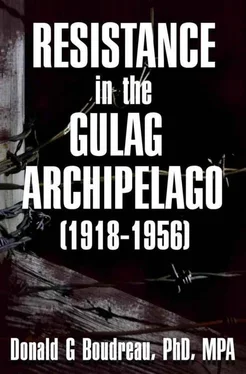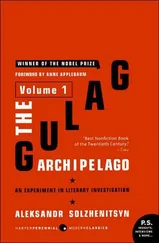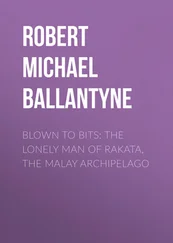Included in the above stated processes of “a criminal justice system,” one would submit the sometimes forgotten tenet of a person’s innocence prior to being proven guilty under law. Equal application of the laws would also be conducive to a system “acting in the interests of all the people.” In fact, the writ of habeas corpus, statutes of limitations, and the prohibitions regarding double jeopardy and the implementation of ex-post facto legislation are all applicable to the concept of “a criminal justice system” as outlined above. If a system, be it through the dictates of its orientation or the madness of the presiding dictator, places a greater emphasis on the objectives of the state thus proceeding to negate the preserving of humanitarian means — then dissent which could serve to ameliorate social conflict will not be made manifest. In accordance with the thought as espoused by Mohandas Karamchand Gandhi, one cannot separate means from ends any longer.
The Russians claimed they wanted to set up a paradise on earth — their subconscious chose hell. They have murdered their scientists, their poets, the soul of their people. The criminal is spreading in every country. In totalitarian countries it is those in power who are criminal.
— Eugene Ionesco (1974) An excerpt from “No,”
Esquire , December 1974:254.
A quarter of a century ago, with the great hopes of mankind, the United Nations was born. Alas, in the immoral world it, too, became immoral. It is not a United Nations but a United Governments, in which those freely elected and those imposed by force and those which seized power by arms are all on a par. Through the mercenary bias of the majority, the UN jealously worries about the freedom of some peoples and pays no attention to the freedom of others. By an officious vote it rejected the review of PRIVATE COMPLAINTS — the groans, shouts and pleadings of individual, common PLAIN PEOPLE — insects too small for such a great organization. The UN never tried to make BINDING on governments, a CONDITION of their membership, the Declaration of Human Rights, the outstanding document of its twenty-five years and- thus the UN betrayed the common people to the will of governments they had not chosen.
— Alexander Solzhenitsyn (1972) Nobel Lecture: 25-26. Translated from the Russian by F.D. Reeve
The Gulag Archipelago (1973) is in scope and density worthy of its subject, which is nothing less than the most massive and systematic repression of a people by its leaders that the world has ever known. The Bolsheviks inherited prison camps from the Romanov monarchy they overthrew, but what had been a purely punitive institution under the tsars became an economic one as well under the commissars. Slave labor attained its apotheosis under Joseph Stalin and his last police chief, Lavrenti Beria. One must preclude discussing particular instances of resistance by first recognizing the relationship between industrial construction and the proliferation of forced labor camps.
Their growth was simultaneous. By the latter nineteen-thirties, the Gulag was responsible for much of the country’s lumbering and extraction of gold, copper, and coal. Gulag camps built important canals, strategic roads, and many industrial enterprises in remote regions. This pervasive use of forced labor, however, had dangerous consequences:
In the first place, the harsh regime established in 1936 used up labor quickly, with a consequent need for replacement. Secondly, because Stalin did not find a rational solution for the problem of building in remote regions, he constantly increased the number of projects assigned to Gulag. [1] Roy A. Medvedev, Let History Judge , p. 394.
State plans even encompassed the mortality rate of the forced laborers. Conclusively, it appears that a vicious circle was created insofar as the system of forced labor became a cause as well as an effect of mass repression.
Resistance by the peasant population to assaulting forced labor was not as obscure as it might appear. D.M. Sturley (1964) observes in A Short History of Russia that protest was employed, futile as it was in stifling Stalin:
Results of the Forced Collectivization did permit the introduction of more efficient methods, the cultivation of new crops, and increased production, but the immediate effects were appalling. The peasants resisted and had to be driven into the collective by the use of machine-guns or by the threat of deportation and forced labour. Rather than hand over their stock to the State they slaughtered and ate it and refused to till the fields. In 1929, there were thirty-four million houses in the U.S.S.R.; in 1933 there were only sixteen and one-half million; thirty million cattle (about 45 percent of the total) had been killed off. Once again in 1932-1933 the country was faced with one of the worst famines it had ever known. The kulaks disappeared, about five million of them, mostly in the forced labour camps and the slow death which they meant. [2] D.M. Sturley, A Short History of Russia , pp. 278-9.
Alexander Solzhenitsyn (1973) tells of how Stalinist rule in the 1920’s quashed any and all forms of dissent vis-à-vis the establishment of permanently operating “troikas” whose purpose it was to bypass the courts. These so called OSO tribunes were composed of panels of three. They were also known as the Troikas of the GPU:
Up to 1924, the authority of the Troika was limited to sentences of three years, maximum. From 1924 on, they moved up to five years of camp; from 1937 on, the OSO could turn out “ten ruble bills”; after 1948, they could rivet a “quarter” — twenty-five years — on you. And there are people — Chavdarov, for example — who know that during the war years the OSO even sentenced prisoners to execution by shooting. Nothing unusual about this. [3] Alexander I. Solzhenitsyn, The Gulag Archipelago , (hereinafter “Gulag”), p. 283.
These troikas utilized three deterrents which served to quash dissent throughout the Gulag archipelago. Their primary and principal distinguishing feature was closed doors. [4] Cf. Solzhenitsyn, “Gulag” at 287.
They were first of all closed courts –for their own convenience. Secondly, in order to avoid any lack of ambiguity they established and utilized a system of predetermined verdicts. [5] Cf. Solzhenitsyn, “Gulag” at 288-9.
Thirdly, dialectics entered the troika operational scheme. All the articles of the code had become permeated with instructions, directions, and interpretations. And, if the actions of the accused are not covered by the Code, he can still be convicted:
• By analogy (What opportunities!)
• Simply because of origins (7-35: belonging to a socially dangerous milieu)
• For contacts with dangerous persons (here’s scope for you!) Who is ‘dangerous’ and what ‘contacts’ consist of only the judge can say. [6] Cf. Solzhenitsyn, “Gulag” at 290.
Directives were issued by Stalin and Beria at their annual convenience. As Solzhenitsyn unveils this system, one comes to realize that it is not the judge that judges. The judge merely receives a substantial salary for his physical appearance, the directives did the judging.
The directive of 1937: ten years; twenty years; execution by shooting. The directive of 1934: twenty years at hard labor; hanging. The directive of 1945: ten years for everyone, plus five years of disenfranchisement (manpower for three Five-Year Plans). The directive of 1949: everybody gets twenty-five. [7] Cf. Solzhenitsyn, “Gulag” at 291.
Roy A. Medvedev (1972) accurately summarizes the events surrounding the Great Purges which preceded the implementation of the above stated Stalinist directives.
Читать дальше












